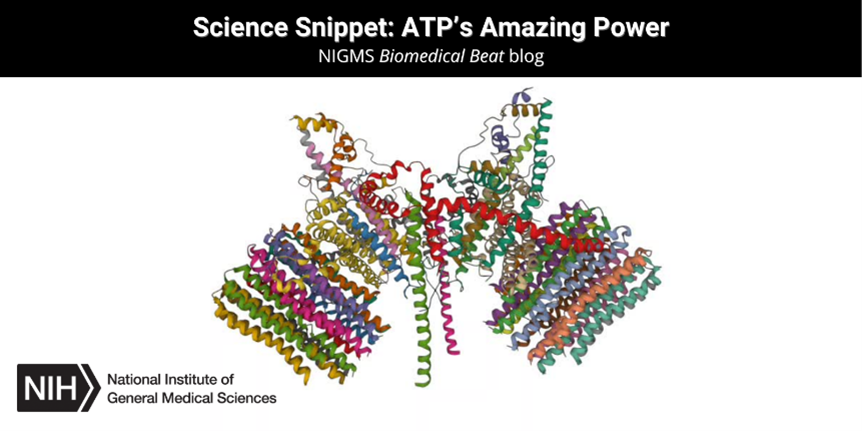
Just as electricity powers almost every modern gadget, the tiny molecule adenosine triphosphate (ATP) is the major source of energy for organisms’ biochemical reactions. ATP stores energy in the chemical bonds that hold its three phosphate groups together—the triphosphate part of its name. In the human body, ATP powers processes such as cell signaling, muscle contraction, nerve firing, and DNA and RNA synthesis. Because our cells are constantly using and producing ATP, each of us turns over roughly our body weight in the molecule every day!
Our bodies can produce ATP in several ways, but the most common is cellular respiration—a multistep process in which glucose molecules from our diet and oxygen react to form water and carbon dioxide. The breakdown of a single molecule of glucose in this way releases energy, which the body captures and stores in around 32 ATP molecules. Along with oxygen, mitochondria are crucial for producing ATP through cellular respiration, which is why they’re sometimes called the powerhouses of cells.
If cells are temporarily deprived of oxygen, like muscle cells are during a strenuous workout, they can produce ATP using a process called fermentation. However, fermentation is much less efficient than cellular respiration, yielding just two ATP molecules per glucose molecule.
Animals, including humans, use food molecules to make ATP, but plants use energy from the sun that they capture through photosynthesis to make it!
NIGMS-Funded Research
Many scientists who are supported by NIGMS investigate ATP-related topics. Some of these researchers are:
- Studying how our cells use ATP to turn genes on and off. Errors in this process have been linked to cancer, and better understanding it could support new treatments.
- Developing tools to shed light on ATP’s role in specific cell signaling that’s involved in immune response, brain function, and other essential processes.
- Learning more about ATP synthase—a key protein in ATP production—to support the development of medicines that target it, which could help treat diseases including tuberculosis and cancer.
- Investigating how stress on a cell can increase mitochondrial membrane permeability, which leads to the inability to produce ATP, causing cell death. Being able to prevent changes in mitochondrial membrane permeability could help reduce damage from strokes and heart attacks.
Learn about other scientific terms with the NIGMS glossary.







